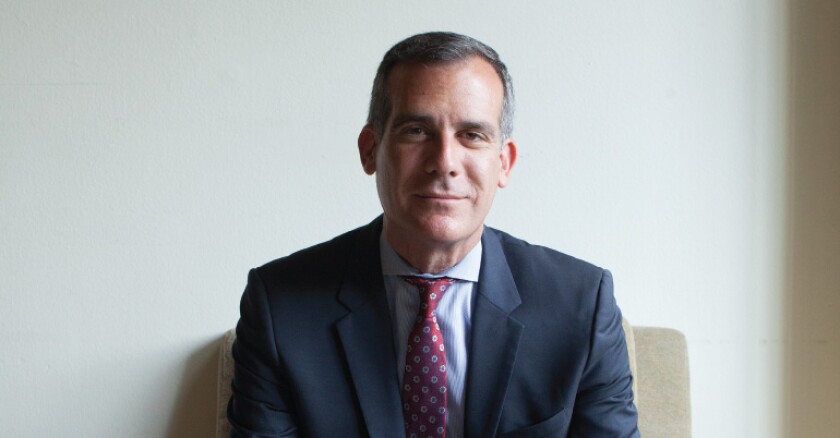Under Garcetti, Los Angeles has created data hubs and centers that use statistics to measure practically everything the city does and figure out how to do it better. That includes the obvious targets such as traffic mobility, tree trimmings, street cleaning and water usage, but also community engagement efforts. Citizens can use data tools to weigh in on long-term budget decisions or track city service delivery records in real time. Garcetti finds ways to turn the numbers into stories, impressing on the public and the city council a sense of what it means to pave and maintain 12,000 miles of road surface, or to find more than 10,000 homeless veterans a place to sleep.
For Garcetti, data is more than a tool for improving the performance of individual programs. It’s become the scaffolding around everything that the city does, a platform for reorganizing the way the place works. Nearly every mayor will tell you that most of the inefficiency in government stems from the inability of different departments to work with each other. Garcetti’s data hubs bring cross-agency activities together. “The comprehensive way that he has approached the use of data to solve practical problems is changing the culture of city hall,” says Stephen Goldsmith, a former Indianapolis mayor who teaches at Harvard and has studied the Los Angeles governmental structure.
A 47-year-old Democrat, Garcetti has made it clear that he has career goals beyond Los Angeles. He’s already racking up the miles with visits to Iowa, New Hampshire and South Carolina, early outposts in 2020 presidential voting. But those efforts don’t seem to spill over into his day-to-day urban management. As mayor, he’s always seen his job as taking care of the basics, and it appears city’s residents are satisfied that this is what he is continuing to do, even with undisguised national ambitions. In 2017, he was elected to a second mayoral term with 81 percent of the vote.
Garcetti has persuaded voters to trust him with billions of dollars to address the city’s most endemic problems: housing, homelessness and traffic. Measure M, a ballot proposition that voters approved in 2016, will provide the transit system with $120 billion in sales tax revenues over the next 40 years, making it the largest local initiative in the nation’s history, times two. “Traffic is the great thief in our life,” Garcetti says, “stealing millions of hours and billions of dollars.”
He is using the 2028 Summer Olympics -- the biggest of all the projects he’s helped land as mayor -- as an organizing principle to drive the largest improvements in infrastructure seen in any city for decades. His “28 by ’28” list of projects includes construction of everything from bike lanes and freeway express lanes to improvements at the airport.
It’s all part of a massive effort to make life a little more livable in a city with one of the largest local economies in the world. Garcetti, with his hands-on management style and obsessive use of data, is keeping voters’ interests at heart as he seeks to reinvent their city while taking his policies to a national audience. “We’re not powerless,” he says. “If Washington can’t get the job done, we can.”
This story has been updated.









